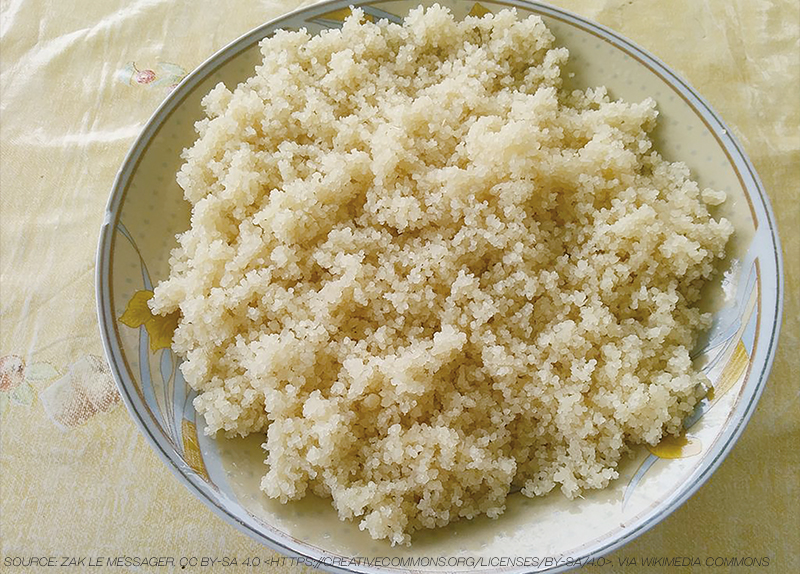
The UNESCO Intergovernmental Committee for the Safeguarding of the Intangible Cultural Heritage met in Asunción, Paraguay, from Dec. 2 to 6, inscribing 63 new elements on the Lists of Intangible Cultural Heritage. Among those that made it onto UNESCO’s prestigious list was the national dish of Ivory Coast, attiéké.
Attiéké is popular not just within the Ivory Coast but in other African countries, especially former French colonies. The dish involves peeling and grating cassava tubers before mixing them with previously fermented cassava. The pulp then gets pressed to remove the starch and is later processed manually, dried, and steamed before serving. The resulting dish has a unique tanginess and a fluffy yet granular texture, similar to couscous. It can be an alternative to rice and eaten with spicy or savory sauces and many different dishes, such as grilled chicken and fish.
Attiéké is a dish traditionally reserved for special occasions such as weddings, baptisms, funerals, birthdays, and community meetings. However, many enjoy the dish so much that they eat it for every meal.
Women and girls take on the role of making this West African staple, the intricate process taking several days to complete. Passed down matrilineally, the steps to making attiéké hold a significant part of Ivory Coast’s cultural and communal identity.
UNESCO’s Lists of Intangible Cultural Heritage aim to raise awareness and ensure better protection of culturally significant practices, knowledge, and skills worldwide. Hopefully, with attiéké’s addition to the list, people can enjoy the dish for generations to come.